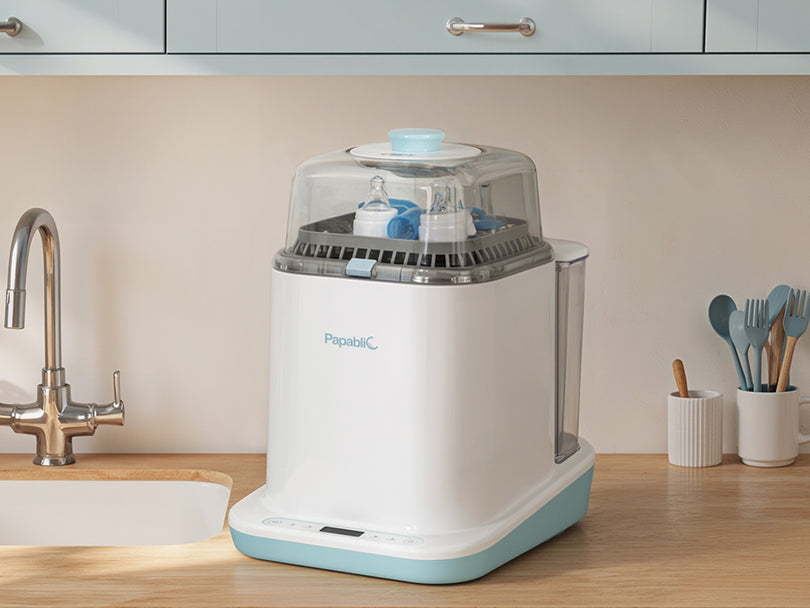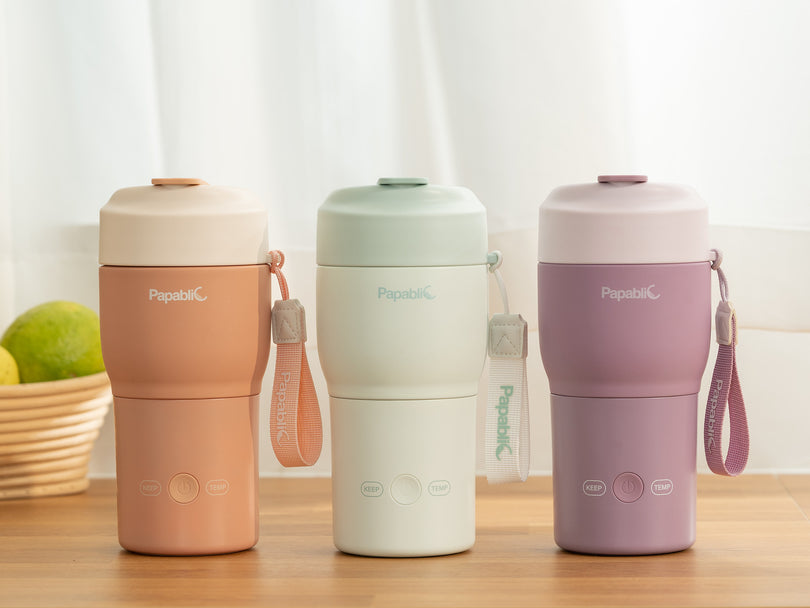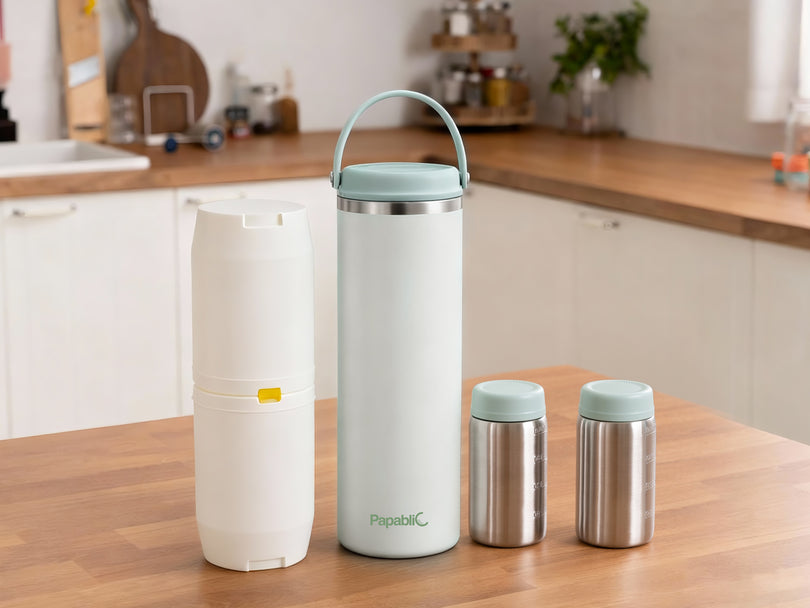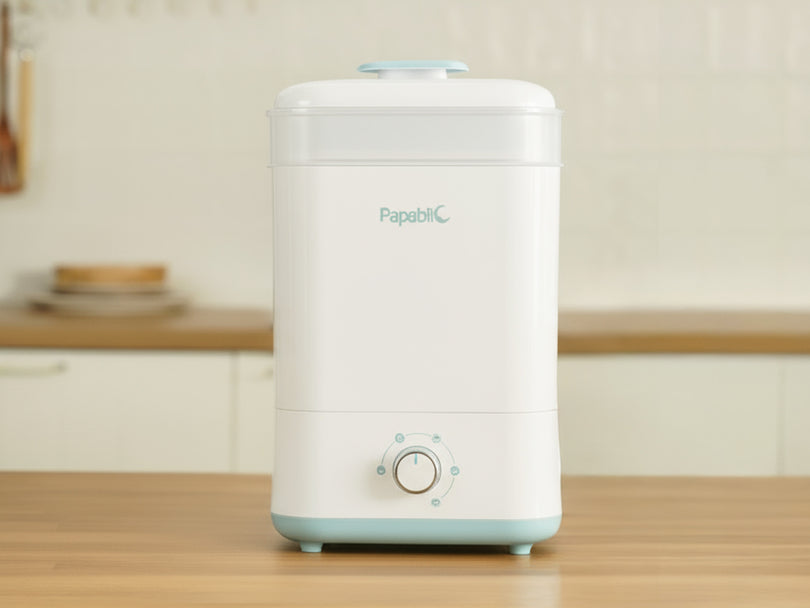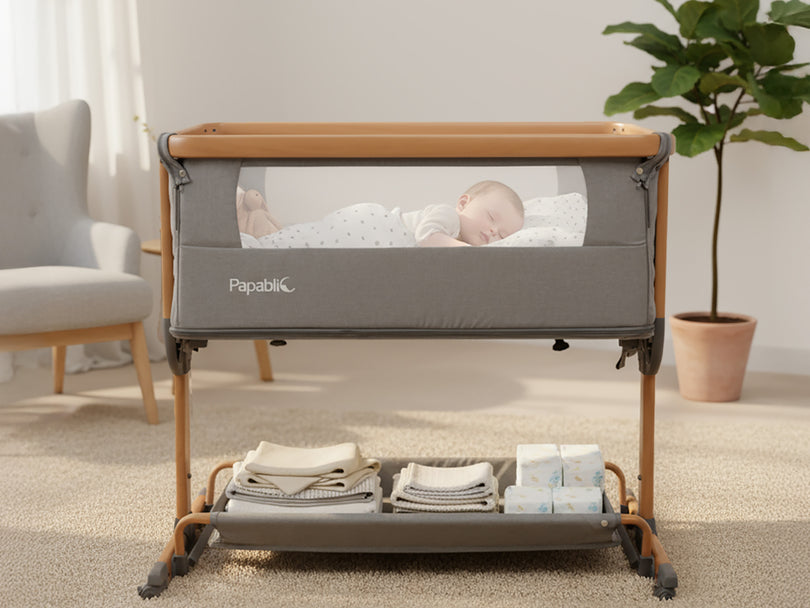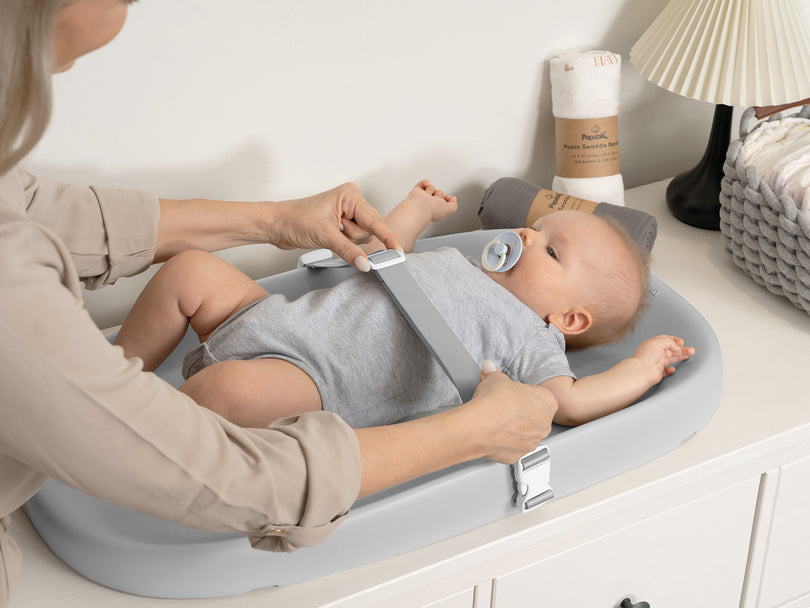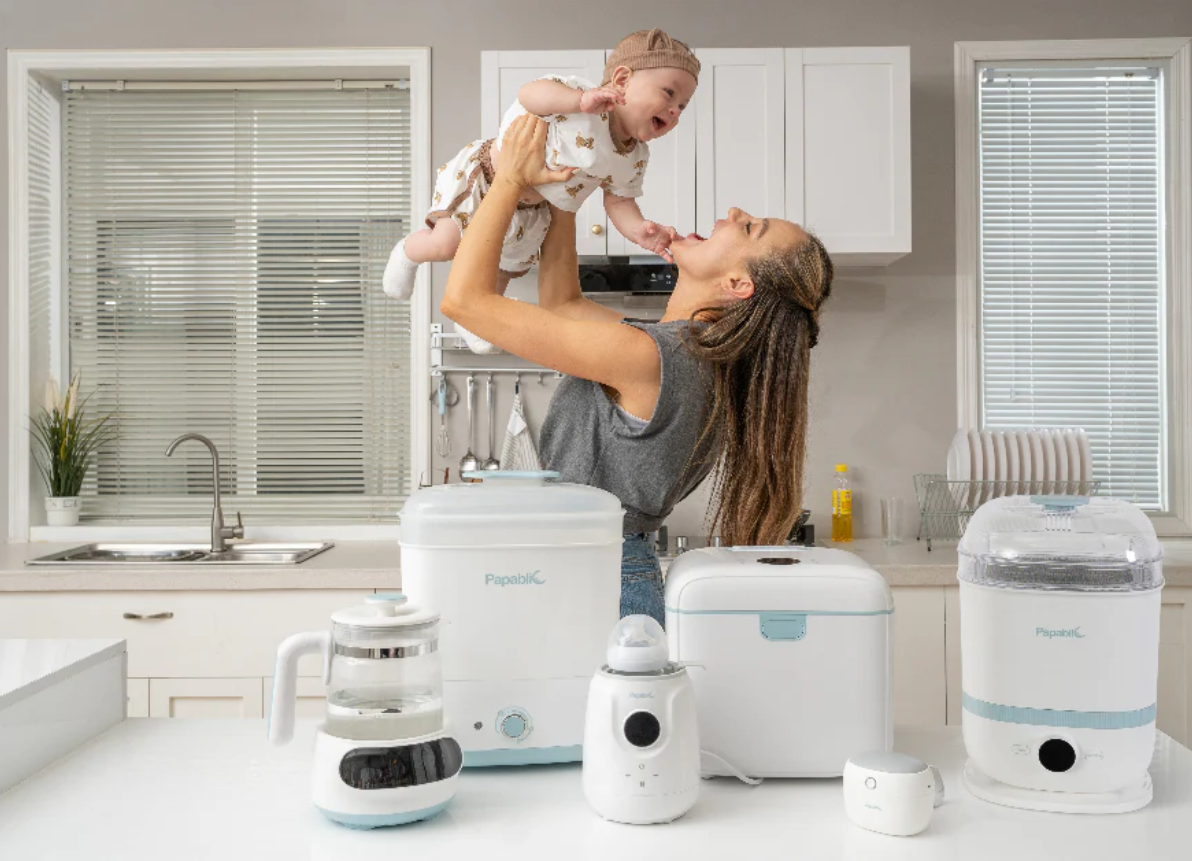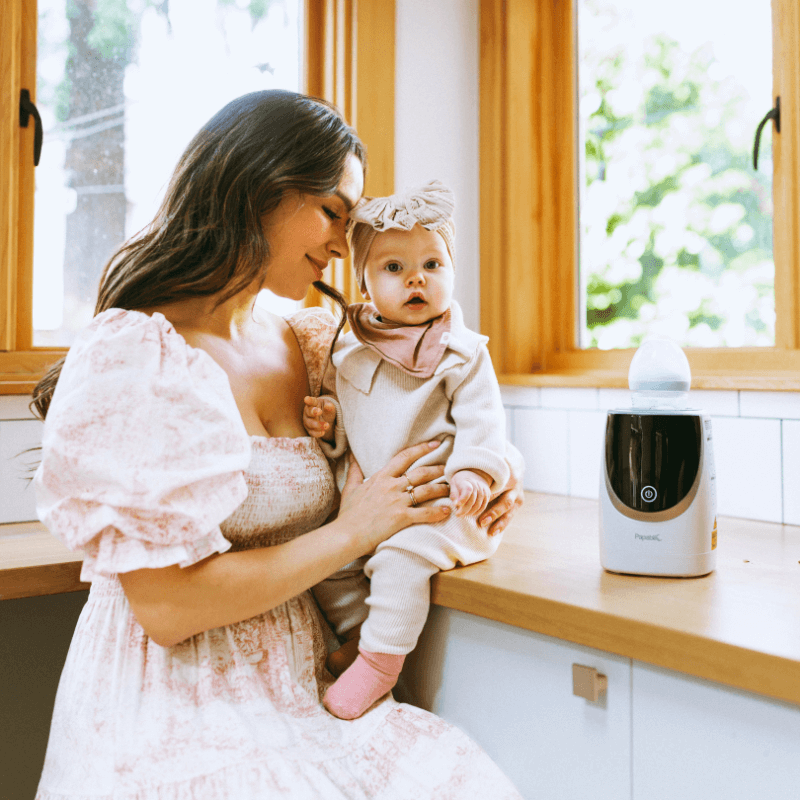Early months with a newborn are all about feeding time. If you decide to bottle feed (whether using formula or expressed breast milk), you must do it properly. Our guide offers a comprehensive rundown on how to bottle feed your baby safely and effectively will be accomplished. It covers everything from the feeding process to the best equipment for your baby.
Step by Step Newborn Bottle Feeding Process
Feeding your newborn starts with a clean bottle and a calm environment. Follow these simple steps:
-
Wash your hands with soap and water before handling any bottles or feeding supplies.
-
Sterilise the bottles before using them, especially for newborns.
-
Make up the formula or breast milk. Even though you think water is water, we’re pretty finicky creatures.
-
Hold your baby upright. Support the newborn's head and neck and tip the bottle to keep the nipple full of milk to prevent air intake.
-
Watch for feeding cues. Your baby can tell you when he’s hungry and when he is full. Don’t force-feed.
-
Burp the baby in the middle and at the end of feeding to minimize gas.
-
Pour out any unused milk after one hour.
Best Bottles to Prevent Colic and Ensure Smooth Feeding
It is important to choose the right bottle to prevent colic, gas, and fussiness. Look for bottles that have:
-
Anti-colic vents to reduce air intake.
-
Slow-flow nipples for newborns to prevent choking.
-
Ergonomic design for easy handling.
Some formulas mimic breastfeeding and reduce nipple confusion. You have a variety of newborn bottle options in your baby essentials kit.
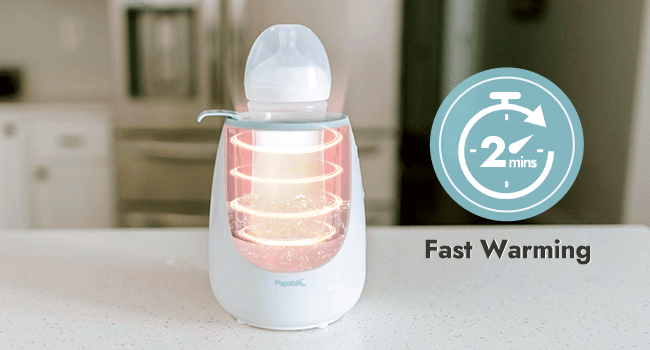
Quick and Quiet Bottle Warmers for Nighttime and Daytime Use
A fast, silent bottle warmer is essential for both day and night feedings. It warms milk to the exact temperature of breastmilk to help ensure your baby is satisfied. Find options that run quietly to prevent disturbing a sleeping baby during middle-of-the-night feedings.
An automatic shut-off function provides maximum security and protection from fire if left unattended or overheating. These are perfect warmers for busy parents who require speed without noise. Discover some of the best bottle warmer choices in the collection and enjoy a great feeding experience for both the baby and the parent at all times.
You’ll find excellent options in the bottle warmer and sterilizer collection. It offers reliable temperature control for both formula and breast milk.
While some babies are perfectly fine drinking cold milk straight from the fridge, others may prefer it warm, especially during nighttime feeds. If your child is comfortable with cold milk, you may not need a bottle warmer at all. However, gently warmed milk can be easier on your baby’s tummy and may aid digestion, making feedings smoother and more comfortable overall.

Effective Sterilizers to Keep Bottles Germ-Free
It’s important to sterilize the bottles, especially in the first few months. The immune systems of newborn babies are not strong, so cleaning feeding implements is necessary.
Use steam-based or UV sterilizers that kill 99.9% of bacteria. Many parents prefer electric sterilizers since they are fast and efficient. A great example is the Baby Bottle Steam Sterilizer and Dryer Pro, which offers powerful steam sterilization and dries bottles in one easy cycle—perfect for busy households. To explore options, visit the bottle sterilizer page for trusted products.

All in One Feeding Systems for Convenience and Efficiency
All-in-one feeding systems save time and space by combining multiple features:
-
Wash, sterilize, and dry bottles in one machine.
-
Reduce the need for separate gadgets.
-
Provide better organization for your feeding routine.
A highly recommended choice is the Baby Bottle Washer, Sterilizer, and Dryer All-In-One. All these products simplify cleaning and preparation, especially for busy parents.

Essential Accessories for Easier Bottle Feeding
Besides bottles and warmers, a few accessories can make bottle feeding smoother:
-
Bottle brushes to get into the nooks and crannies.
-
For feeding your little one formula on the go.
-
Bottle drying rack, keep the air dry and clean.
-
Bottle bags with insulation to keep milk cool on the go.
All these tools simplify the process, helping you focus more on bonding with your baby.
Troubleshooting Common Bottle Feeding Problems
Bottle feeding can come with a few hiccups. Here’s how to solve the most common issues:
-
Baby rejects the bottle: A differently shaped nipple might help, or he milk might be too hot.
-
Gas and fussiness: Burp more often and consider an anti-colic bottle.
-
Spit-up: Ensure that your baby isn’t overeating and prop him or her upright during and after feeding.
-
Leaky bottles: Make sure the lids are on tight, and the nipples have a flow rate that matches your child’s age.
If you remain vigilant and reprieve when and where necessary, most issues will resolve with time.

Recommended Products for Travel and On-the-Go Feeding
Feeding a newborn on the go requires the right gear:
-
You have to use portable bottle warmers for trips.
-
Try pre-measured formula containers for quick prep.
-
Sterilized bottle liners for reduced cleaning while traveling.
-
Compact coolers for storing milk safely
These tools help maintain your routine even when you’re out of the house. Explore more travel-friendly options in the Papablic bottle warmer section. So that you can find a model that fits your lifestyle.

FAQs
How often should I feed my newborn?
Feed your new baby every 2 to 3 hours. That's eight to twelve times a day. Newborns’ stomachs are small, so they need milk often.
How can I tell if my baby is getting enough milk?
Your baby is feeding well if they’re gaining weight, having 6 to 8 wet diapers a day, and appear happy after feeds.
Is it safe for me to make up bottles?
Yes, you can prepare bottles in advance. Store them in the fridge and use them within 24 hours. Warm the milk before you feed and test the milk temperature. Don't allow milk to sit out longer than 1 hour.
Do you always have to sterilize bottles?
Yes, you should always sterilize a newborn’s bottles. This is what kills germs and what keeps your baby safe. A few months in, you can probably sterilize less frequently, but still be vigilant about cleaning your bottles thoroughly. Wash in hot soapy water or with a reliable bottle sterilizer.
What if my baby won’t latch to the bottle?
Experiment with a bottle nipple that has a breastlike feel. Ensure that the nipple flow is neither too fast nor too slow. Heat the milk to body temperature. A bottle warmer can also help to keep milk warm and ready to be consumed.
Summary
It’s not difficult to bottle feed your baby. By paying attention to the basics and selecting the correct tools, we can ensure that feeding is a safe and smooth process, without any hassles. Whether at home or on the go, the right accessories and all-in-one functionality will make all the difference.
With the help of Papablic’s baby essentials, you’ll find everything you need. You will be able to create a reliable and loving feeding environment for your baby.
Read more:
Best Practices for Warming Breast Milk: Everything You Need to Know
How to Choose the Right Bottle Sterilizer
The Science of Bottle Sterilization: How It Works and Why It Matters

